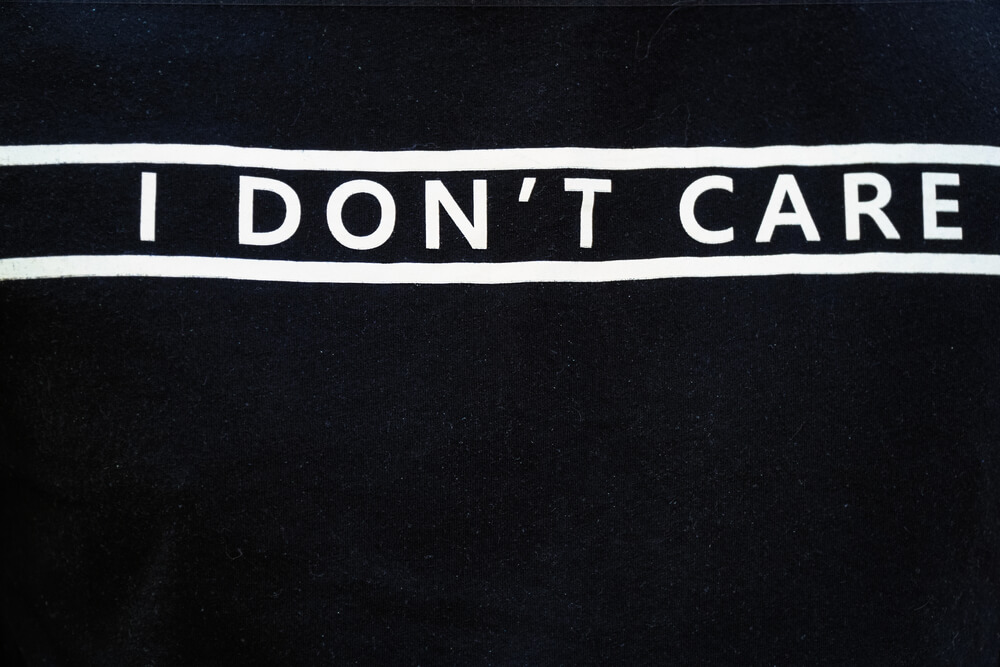Definition
The cognitive dissonance theory (CDT) of Leon Festinger describes how humans adjust actions and behaviors in the presence of personal beliefs. When there is inconsistency in belief and action – or cognitive dissonance – we experience a feeling of discomfort. We then try to consciously or unconsciously reduce this discomfort through changes to either our actions or beliefs. This theory plays a major role in the field of social psychology.

Cognitive Dissonance Examples
The examples of cognitive dissonance in this section cover the ways in which we try to reduce inconsistency between our behaviors and beliefs. Probably the oldest and best-known tale that perfectly describes one small part of this important social psychology theory is the tale of the Fox and the Grapes by Aesop. This story tells of a fox who is tempted by a juicy bunch of grapes hanging high above his head. After spending a lot of energy trying to reach them without success, the fox tells himself that they are sour and not worth the effort.

Cognitive dissonance is an extensively studied area of social psychology and a foundation stone of the human thought process. Many psychological and behavioral disorders are treated through cognitive therapy, and cognitive dissonance plays an important part in this type of treatment. Humans (and maybe some foxes) use different ways to match their beliefs with their actions as it is not always easy to always stand up for what you believe or turn your back on important information that causes upsets to your lifestyle. Not doing the right thing makes us feel guilty, ashamed, and uncomfortable. What the right thing actually is is a personal decision. In a dictatorship, people might be scared to do the right thing but many of them still attempt to, even at the risk of their lives, to alleviate the feeling of cognitive dissonance.
Our minds want to get rid of the feelings of cognitive dissonance and use various ways to do this. Cognitive dissonance usually involves a variety of different methods that have a cumulative effect on the alleviation of discomfort. The primary methods are devaluation, belief balance, new beliefs, and behavior changes.
Devaluation
Humans try to reduce their level of cognitive dissonance by lowering the importance of any beliefs that do not match their behavior. When you put a low value on conflicting knowledge, you can reduce the gap between what you believe and subsequent or simultaneous behavior.
One solid example is how smokers devalue the dangers associated with smoking. Smokers know that their habit is an unhealthy one that can lead to potentially fatal pathologies such as lung cancer. The action of smoking is dissonant (against) their beliefs (knowledge) and has the potential to give a smoker a very uncomfortable feeling every time he or she lights a cigarette. One way in which a smoker may alleviate this feeling is to tell themselves or others around them, “we all die at some point”, or “there’s no history of lung cancer in my family and they all smoked”.
The biggest step in devaluation is to completely ignore or deny any contradictions and reject any thoughts that might cause guilt, shame, or anxiety. As the smoker knows that this habit is not a socially acceptable, healthy habit, whenever a negative feeling enters the mind, he or she will do something to distract this dissonance. This might be done through watching television, gaming, or telling the voices (conscience) to shut up and go away.

Belief Balance
A second way of reducing the inconsistency between beliefs and actions is through adding consonant (pro) beliefs that outnumber the dissonant (contra) ones.
This method usually involves researching any information that relieves the stress of dissonant behavior. We could apply this to the smoking example, where a smoker looks into biased research that gives much lower smoking-related fatality statistics. This is not a great example as there is very little of this information available.
A more appropriate example might concern one’s choices that are made to help save the environment. Imagine someone believes that climate change is the result of high fossil fuel use but uses a fuel-guzzling automobile to make short and long journeys at regular intervals. The idea of giving up this mode of transport is not acceptable to them but at the same time, environmental issues are important to this person. That person will try to bring belief and action closer by researching other causes of global warming. He or she might read that large data centers use significant amounts of energy. As this person does not own a large website, he or she might then feel that their contribution to global warming is not enough to cause discomfort. They continue to use the hummer.
In addition, this person will probably also look for reasons why a large automobile is a justified mode of transport. They have a large family, they work too hard and do not have the time to walk, they enjoy the freedom of driving where and when they want, they deserve a little luxury, they do not have the money to buy a hybrid car, there are no electric car charging points close to home, and there are no safe bike lanes. These reasons will grow in number until the frustrations caused by this particular cognitive dissonance are relieved.

New Beliefs
A third method, according to the psychologist Leon Festinger, is our ability to change our dissonant beliefs to match our behavior. This can be a damaging way to alter levels of discomfort in the smoking example, as research has proved beyond a doubt that smoking kills. One of the ways of dealing with contradiction is low self-esteem: “I don’t have the willpower”. Others allow us to give up trying – the fox changes his beliefs from “I want those grapes”, to “those grapes are sour” as his needs are left unmet.
A person who has been brought up in a highly religious environment but can’t stick to the many laws and rules that the religion imposes might cause them to change religion or turn against it altogether. This requires a complete change of the belief system, perhaps letting go of an earlier belief in life after death and divine intervention.
A child who skips school a lot because they don’t like mixing in large groups might opt to blame the teachers and other pupils or make themselves believe that an academic education won’t make a difference, no matter whether this student achieves good grades or not. The child will choose to ignore the positive side of schooling and change his or her beliefs to justify skipping classes.
Changing Behavior
The most positive of the methods that relieve cognitive dissonance is our ability to change our behavior due to our beliefs. In regards to the above-mentioned examples, this could involve making a decision to quit smoking, buy an electric car or bicycle, adhere faithfully to the rules of religion, or attend classes at school.

A person who loves animals and is affected by how animals are treated in a commercial setting may choose to become a vegetarian and volunteer at an animal sanctuary. An overweight person who enjoys eating unhealthy options but believes that obesity is unhealthy may change their eating habits and begin an exercise regime to lose excess weight. In a less positive light, a person who is in an abusive relationship might believe their life is in danger if they do not do what their partner tells them. Instead of doing what they choose, their behaviors and actions depend on what the abusive partner wants.
Cognitive dissonance in relationships begins at an early age between parent and child and influences how we interact with friends, strangers, work and public relation environments, and sexual partners for the rest of our lives. The people we meet, know, and love – even strangers we watch online – have the potential to affect our belief systems and opinions. Someone brought up in a family setting where any form of crime is harshly judged might adjust their beliefs if working in a jail; through establishing work-defined relationships with prisoners, many of the inmates could convince this person that they should be given the opportunity to turn a new leaf.
Generalizations concerning certain groups – all teenagers are moody and non-communicative – are consistently challenged throughout life and must be dealt with through a change in belief, a change in behavior, by ignoring new knowledge, or even by finding other factors that support the generalization. There is an important factor to add when it comes to cognitive dissonance. If one does not think that a factor is of personal importance, cognitive dissonance does not occur. To exist, cognitive dissonance requires the presence of two similarly important factors. This is discussed under cognitive dissonance factors.
Global Cognitive Dissonance
Today, climate change is featured on every media channel. It is a universal topic that affects all of us. But why are we unable to put a stop to it? Why do we still carry on doing things that we know harm the planet?
Cognitive dissonance is a personal experience that depends entirely on how important a belief is and how much contradictory information challenges that belief. Global cognitive dissonance is only possible if everyone thinks in exactly the same way. This just isn’t the case.
The world is a comfortable place for many of us. We enjoy accessibility to products produced all over the globe that make life easier or more luxurious. We feel we deserve extras for working or studying hard; we compete with others in our social groups and try to get ahead in life. From a favorite shampoo to the Internet at our fingertips, and from hot water whenever we want it to frequent long-haul vacations, anyone with a healthy bank account is given lots of daily opportunities to feel good. Alternatively, the world is not a comfortable place for many others. Lack of housing, food, work, and social support makes life tough. The better-off group may so enjoy their lifestyle that global warming is the last thing they think about; the other group may be so focused on surviving that the survival of the planet is the last thing on their mind. When the topic of global warming isn’t personally important, it’s not going to cause dissonance.

While turning the thermostat down a single degree is simple for many of us, making sacrifices that require significant effort is not. The complete renovation of a badly-insulated house or an electric car is expensive. The idea of vacationing at home when you are used to visiting far-off destinations five times a year might make you feel like you are missing out. Ordering goods from sources far from home is often weighed according to cost rather than the good of the planet. At the same time, social media constantly asks us to rethink how we live. It reminds us that our behavior is responsible for rising water levels, drought and forest fires, the extinction of species, and the frequency of natural disasters. This clash between behavior and belief has the potential to create a lot of cognitive dissonance but only if social media can target people who actually care about their message.
If the message does tug at your conscience, the most common method of dealing with this information is to ignore it and so devalue it. We call sources ‘fake news’, say they are exaggerated, and point to larger groups who are more responsible for climate change than a single person such as governments and industries. Some people will simply close the page or unsubscribe to a newsletter that makes them feel a little guilty. We may make slight changes to our behavior by paying a donation to help lower CO2 emissions or choosing local apples at the grocery store; however, when these changes affect our daily routines and we know that we are still not doing enough, it is easier to puts our heads in the sand and point the finger. The other alternative is to change our behavior and make huge changes to our way of life.
When someone expects others to live according to the rules but does not themselves abide by these rules, this is called hypocrisy. Hypocrisy is another feature of cognitive dissonance. By making lots of others change their habits to save the planet, cognitive dissonance can be relieved. A successful influencer might travel by private jet and import exotic groceries, but they can alleviate any dissonance by telling themselves that at least they have prevented thousands of others from doing the same.

Many people have chosen to seriously adapt their lifestyles so they only produce the smallest possible carbon footprint. This is changing of behavior to match belief. Some actions are drastic, such as deciding not to have children and contribute overpopulation. Other people do not care about the state of the planet they live on; the importance of the topic is not personally significant enough to cause cognitive dissonance.
Whichever one of the above examples you are, it would be an interesting experiment to consider which elements could be applied to your beliefs and behaviors concerning one of this century’s hottest (literally) topics.
Cognitive Dissonance Factors
Two cognitive dissonance factors must be present that force a person to choose between two beliefs or behaviors that contradict one another. Coming to a decision is not always easy, especially when both alternatives are tempting. A typical cognitive dissonance meme tells us ‘if at first you don’t succeed, lower your standards’. Changing behavior to coincide with a belief is rarely easy. The reason why it is difficult to change behavior to fit belief is due to two important factors.

The first factor is the total number of dissonant beliefs a person has. The more contra-indicative arguments against your behavior or against your belief system, the greater the cognitive dissonance, and the more important it is to alleviate the uncomfortable feeling.
The second factor is how important these beliefs are. Leon Festinger studied the members of a religious cult called The Seekers or The Brotherhood of the Seven Rays, eventually publishing his findings in the book When Prophecy Fails: A Social and Psychological Study of a Modern Group That Predicted the Destruction of the World. The subject of this book was a group of believers who had given up homes, families, careers, and lifestyles to prepare to fly away in a spaceship before a great flood that would end the world. Their belief in this event was so strong, they completely changed their behavior. You don’t need a home, possessions, or a career when the world is ending, after all.
However, the predicted date passed and the world continued as usual. But the group didn’t look sheepishly at each other and disperse. It strengthened their belief.
Festinger researched the night of this supposed end of the world based on firsthand cult member interviews. The entire group sat in silence for four hours after the scheduled time of the spaceship pick-up. Eventually, the cult’s leader, Sister Thedra, was ‘given a message’ from the God of Earth. She told the group that their actions had saved the world; that God was so impressed by the cult members that earth would be saved.

Festinger realized that when beliefs are contradicted, they must become stronger or at least be maintained to avoid cognitive dissonance. Social support with like-minded people, a deep conviction of a belief or opinion, and full commitment to that belief through very definite actions mean that any contradictions have much less of an effect; faith beats non-existent spaceship. However, when challenges to important beliefs are absolutely proven and, most importantly, personally acknowledged, the result will be cognitive dissonance. The person in question is then psychologically obliged to take steps to become free of the very unpleasant effect.
Whenever a contradiction to something important is proven and acknowledged, the believer will feel anxious or guilty. The stronger the belief, the stronger the evidence against it must be. The ability of the brain to twist fact into fiction for its owner to continue to behave in a familiar way is always the result of cognitive dissonance.
Quiz
